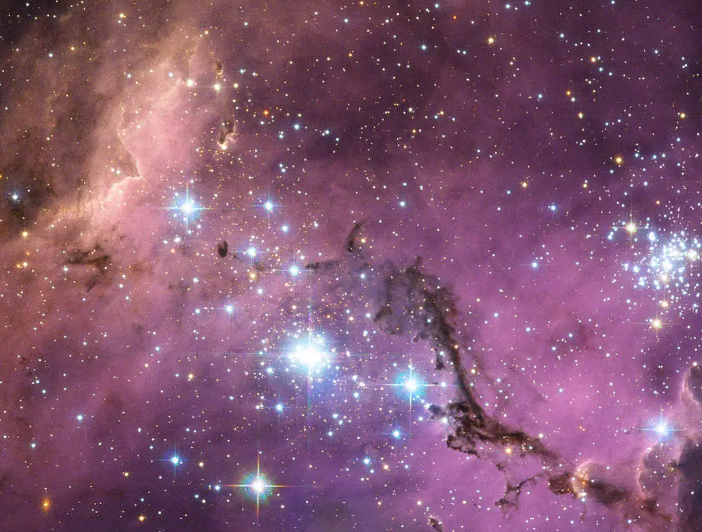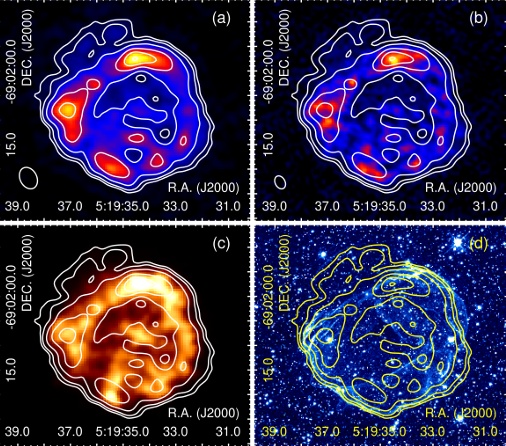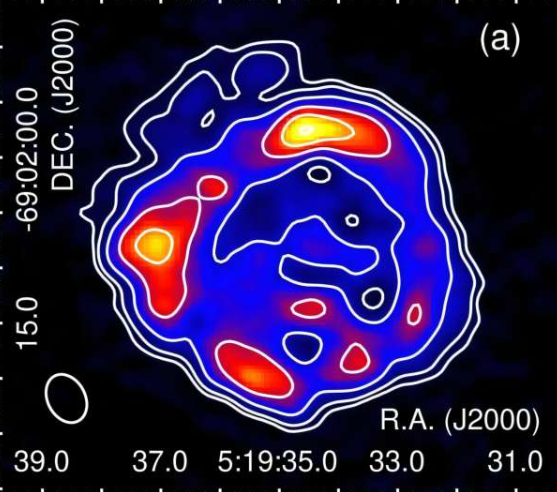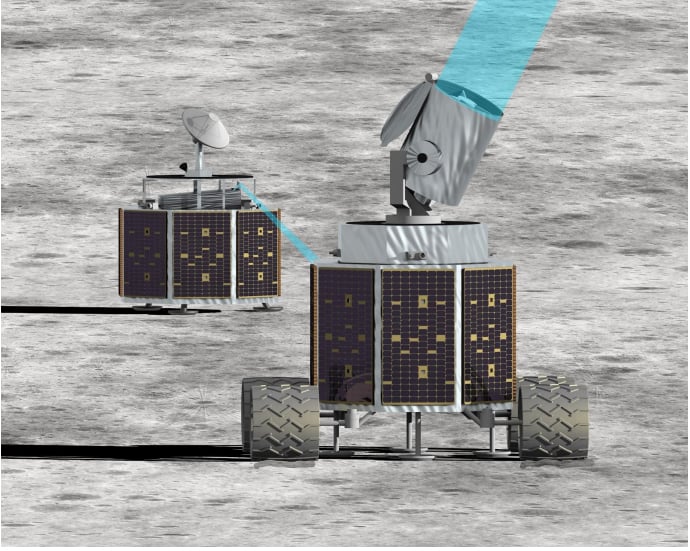
Astronomers just took a fresh look at a supernova remnant called MC SNR J0519–6902 tucked away in the Large Magellanic Cloud, a small galaxy orbiting the Milky Way. It’s been known since the early ’80s, but there’s still a lot we don’t fully understand about it, especially when it comes to its age and how it’s evolved over time.
So, a team led by Rami Alsaberi from Gifu University decided to dig deeper. They used the Australia Telescope Compact Array (ATCA) and the big 64-meter Parkes dish, plus data from Hubble and Chandra. Basically, they threw a lot of telescopes at it, radio, X-ray, and optical to get the full picture.
Here’s Why that Mix Matters
The ATCA and Parkes telescopes are great for picking up radio waves, which help map out the structure of the remnant and give clues about things like magnetic fields and how the gas is moving. The Hubble data fills in the optical side, so we can see things like the remnant’s shape and how it’s interacting with nearby material. And Chandra’s X-ray data is crucial for showing the hottest, most energetic stuff like the shock-heated gas from the explosion.
Along with these pictures, the team also looked at the polarization of the radio waves, which can reveal how the magnetic field is aligned inside the remnant. Turns out, the polarization was about 5% at 5,500 MHz and bumped up to 6% at 9,000 MHz. This means, that 5% of the radio waves at 5,500 MHz were aligned in the same direction, and that number increased to 6% at the higher frequency of 9,000 MHz.
That might not sound like a lot, but in astronomy, even a few percent is meaningful. Here’s why this matters:
- Polarization tells us about the magnetic field in the remnant. If the field is somewhat ordered (instead of completely chaotic), we’ll see polarized light.
- The fact that the percentage goes up with frequency suggests that the magnetic field might be more ordered or structured in certain regions, and we’re seeing that more clearly at higher frequencies.
- Comparing this to other young supernova remnants helps astronomers figure out where this one is in its lifecycle.
And the current data suggests that MC SNR J0519–6902 hasn’t been around very long.

Radio Signals and Magnetic Fields Point to a Young, Vibrant Supernova Remnant
They also worked out its spectral index, which came out to –0.62. That’s basically a measure of how the radio signal changes with frequency, and again, it matches what we see in younger supernova remnants. For comparison, that number is really close to what we see in Kepler’s SNR and SN 1006, both of which are also fairly young.
Then there’s the magnetic field. Based on the data, they estimate it falls somewhere between 10 and 100 microgauss. That’s not super strong in Earth terms (for reference, a fridge magnet is about 100 million microgauss), but for space, that’s pretty solid. And once again, that strength lines up with what’s typically seen in younger SNRs.
Somewhere Between 450 and 1,500 Years Old
Now, about the age, this is where things get tricky. Previous studies had estimates all over the place, anywhere from 450 to 1,500 years old. That’s a pretty big range, and it’s caused a lot of debate. But based on the polarization, spectral index, and magnetic field strength, this team leans toward the younger end of that range.
They also suggest that the remnant is probably finishing its “free expansion” phase, that’s when the debris from the explosion is still moving outward really fast and about to shift into the next stage, called the Sedov phase, where it starts to slow down as it slams into more interstellar material.
The remnant itself is about 26 light-years across and has a ring-like shape with three noticeably bright regions. That ring structure showed up clearly in the radio observations, especially in the velocity channel maps they included. It’s believed to be the result of a type Ia supernova, so the kind where a white dwarf exploded after reaching a critical mass, likely between 1.2 and 4 times the mass of our Sun.

From 450 to 1,500 Years
What’s interesting is that despite being studied for decades, people still don’t agree on how old this thing is. Some estimates say it’s as young as 450 years, others say closer to 1,500. It’s probably somewhere in that range, but the wide gap shows how tricky it is to pin down without consistent data.
The researchers published everything on arXiv (here’s the DOI: 10.48550/arxiv.2504.11746), and their work gives us a clearer sense of where this remnant sits in its life cycle.
Takeaway
J0519–6902 looks like it’s a relatively young supernova remnant still settling into the next phase of its evolution. And with all this new data, astronomers can better compare it to others and understand how these remnants shape their surroundings over time.
It’s pretty incredible to realize that even after hundreds of years, these leftover pieces of space material still have stories to share. Each new discovery helps us understand how stars and galaxies are born, live, and eventually fade away in ways we couldn’t understand before. Doesn’t it make you wonder what else is waiting out there to be discovered?
Source: Phys.org



